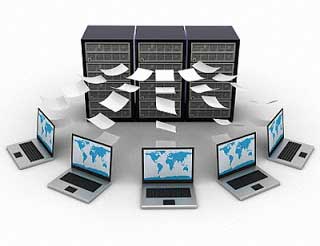
Whether you use your computer for surfing the Internet and downloading music or store information for multi-million dollar work projects, one need is constant across the board. You may think your files are safe once they’re saved on your hard drive, but the reality is that bad things happen to good people and important files are often lost or destroyed. The upside is that there is no need to fear. In the event of hardware failure or malware infection, backup solutions like Novastor offer a full system recovery giving you peace of mind. Backing up your important information is much easier than most people think, and can even be scheduled regularly to eliminate the need for you to put out the effort.
Important Terms to Know
You’ve heard them before, but may have no idea what they mean. A basic understanding of the following terms will help you to complete your backup process.
- Hard Drive – A hard drive is a part of your computer that holds all your folders and files including pictures, videos, documents and everything else you love. Think of your hard drive as the basket where you throw all your important mementos you want to save. The hard drive is most often measured by using Gigabytes or Megabytes.
- Gigabyte/Megabyte – The term Megabyte is loosely used to define the total amount of space that each file takes up on your hard drive. A Gigabyte holds 1,000 Megabytes.
Storage Methods
When you back up your data, you’ll find a list of several storage options, and each offers their own set of advantages and disadvantages. Some are more expensive and offer more storage and options, while others require you to invest a little more time and effort into the saving process.
External Hard Drive – An external hard drive connects to your computer through a USB port and functions as a second hard drive. All your important files and folders are moved to the external hard drive. An added bonus of the external hard drive is the fact that it can be easily carried with you anywhere you go or in the event of an emergency.
Internet Storage – Many consumers and businesses are choosing to forego the hardware method of storage and turning instead to the Internet, or the Cloud. With Internet storage, you are not required to purchase any additional hardware, and may get limited storage space for free. These storage methods are fairly quick and easy to use.
Other Options – Advanced computer users may choose to use an internal hard drive, DVD, or RAID to back up their computer, but for the average user, these options are not recommended.
If you want a quick and easy way to save data, choose the Cloud. If you need more space and have the cash to invest, you may benefit from using an external hard drive.
Sometimes you may not need your storage data and want to get rid of it then you should opt for hard drive destruction so that nobody gets access to it. Depending on where you are, you can find a service by simply searching online for hard drive destruction near San Diego or the city you’re currently in.
Quick Tips to Make the Process Easier
- Set your data backup to run at least weekly.
- Store your data in two separate places if possible.
- Store your external hard drive in a safe place in case of an emergency such as a flood or a fire.
- Seriously consider using The Cloud for easy storage.
The key to staying on top of data backup is to choose the option that works best for you. As consumers come to rely more on the Internet, The Cloud backup solution is poised in prime position to take over as the most convenient storage option.










thanks for share about backup of computer for surfing the Internet and downloading information for dollar work projects
You should note that the Windows instructions work on Windows 7 (and presumably, up), not on Vista nor on XP, still the world’s most popular OS.
On the Mac side, it’s a little easier, since almost everyone is running 10.5+, but on the Windows side … you definitely need the note.